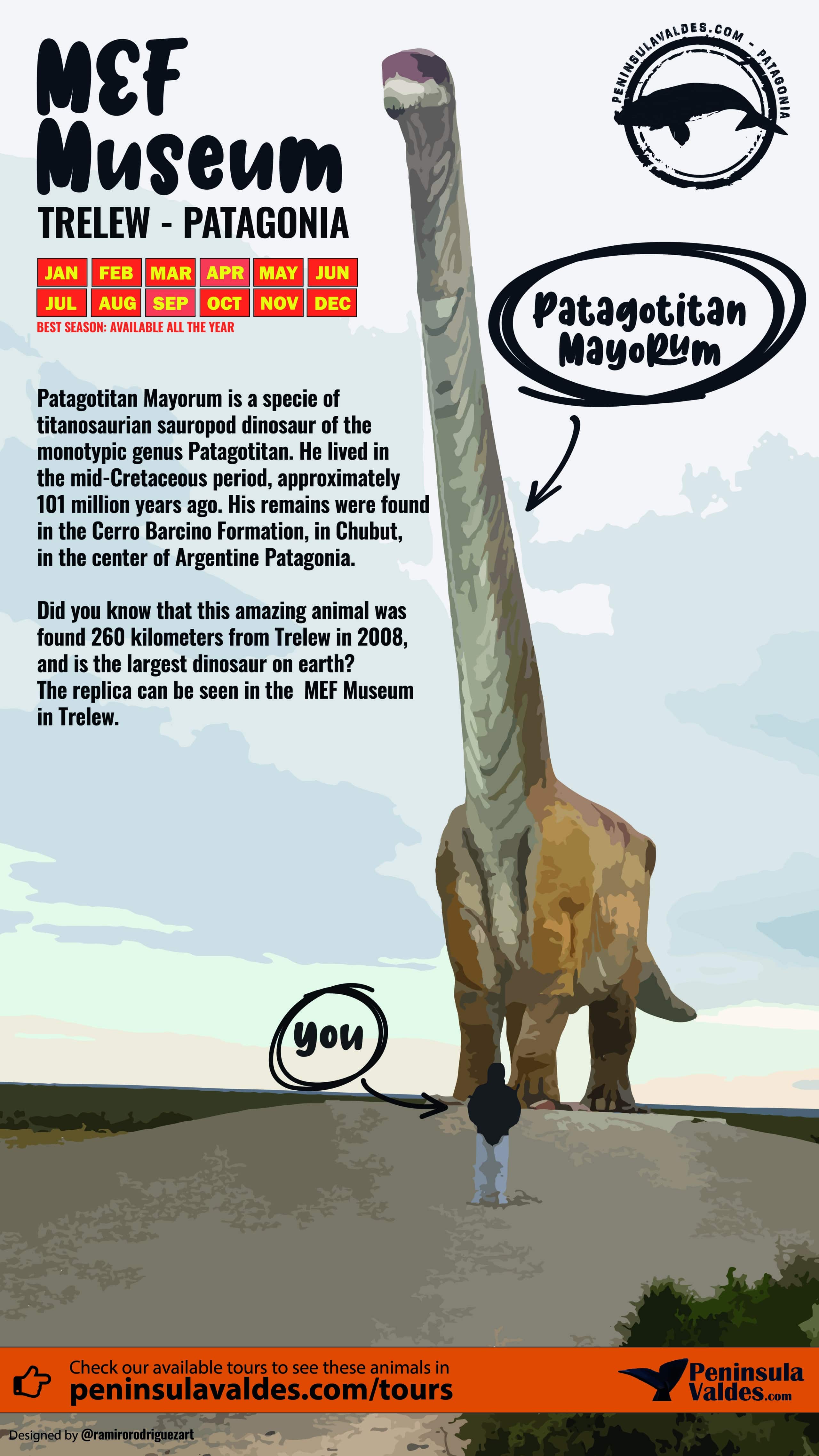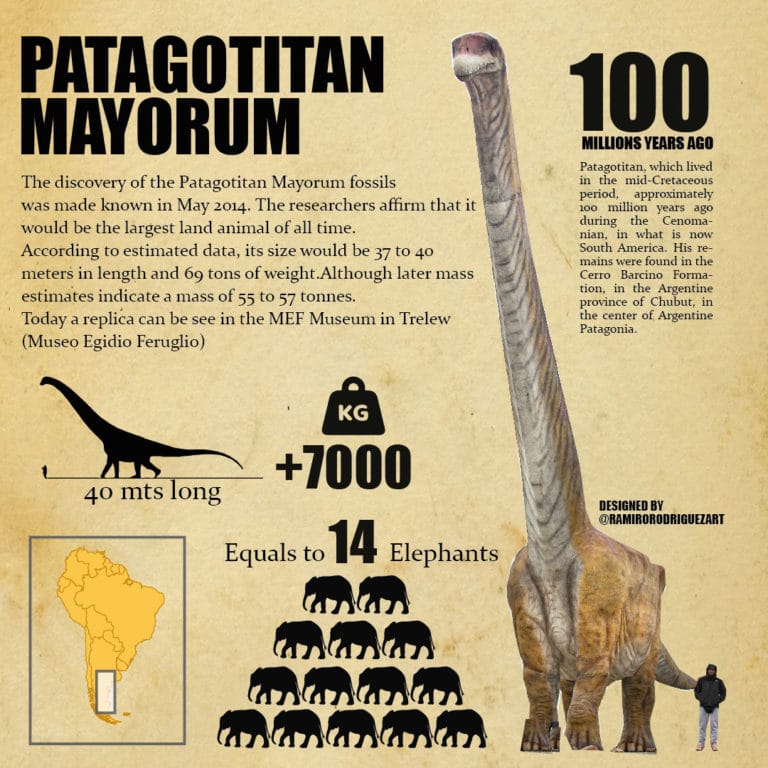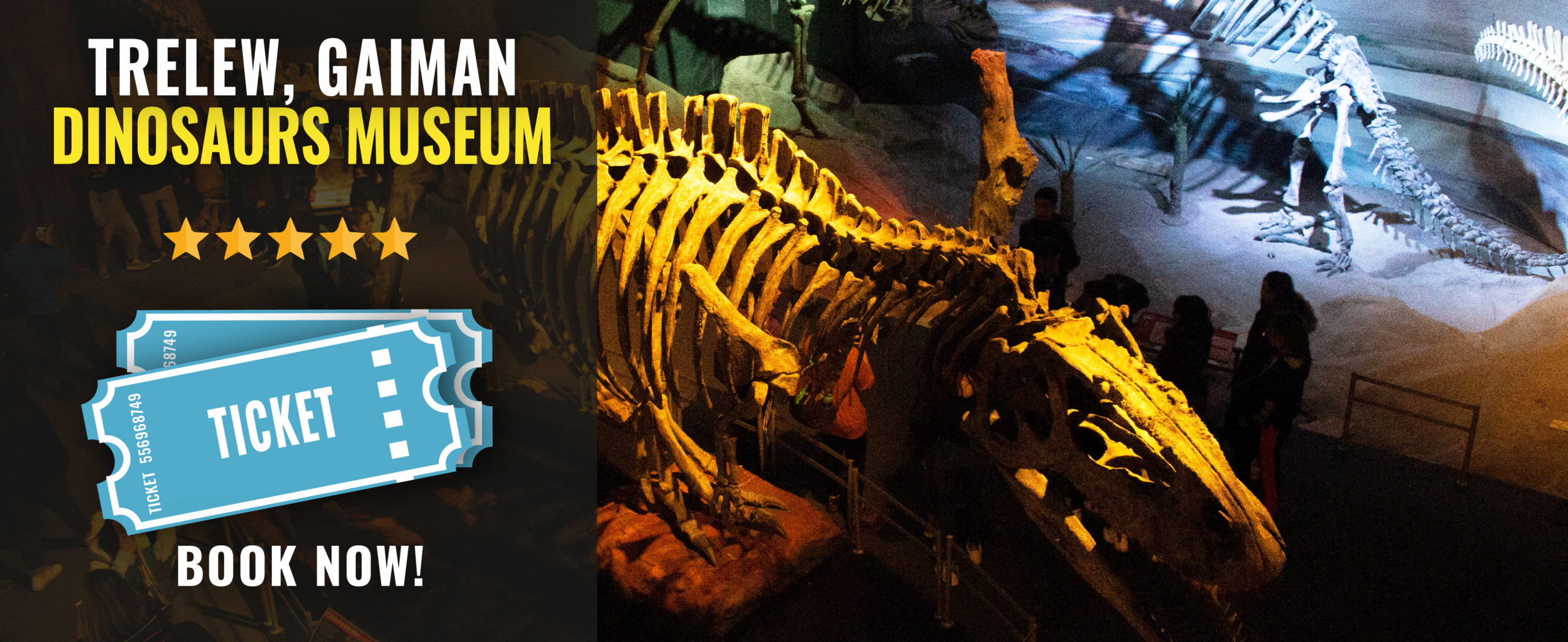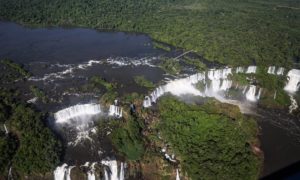The Patagotitan Mayorum in Patagonia
Patagotitan mayorum is a specie of titanosaurian sauropod dinosaur of the monotypic genus Patagotitan. He lived in the mid-Cretaceous period, approximately 101 million years ago, in what is today is South America. His remains were found in the Cerro Barcino Formation, in the Argentine province of Chubut, in the center of Argentine Patagonia.
The Patagotitan Mayorum: How was it discovered?
Few years ago a rural laborer found a bone sticking out of the ground in a field in the province of Chubut where he was working. The owners of the ranch notified the Egidio Feruglio Paleontological Museum (MEF) and after more than three years of excavations, Council scientists announced the discovery of fossil remains of at least six specimens of the largest known dinosaur Until now.
Recently, the team of paleontologists that led the campaigns presented the new species, called Patagotitan Mayorum, in an article published in the prestigious journal Proceedings of the Royal Society B in which they describe the remains found and study how gigantism evolved. in this group of dinosaurs.
“It is named for the region and for titan, which means giant. Mayorum honors the Mayo family who are the inhabitants of the area who gave notice to the Museum and received us in their field while we carried out the excavations. We find more than 150 bones buried in rocks from the Lower Cretaceous, that is, a little more than 100 million years ago. We calculated that it was almost 40 meters long, its neck 12 meters, and it weighed 70 tons. Other very large species of approximately the same age have been found in Patagonia and one of the things we discovered is that these giants were closely related to each other, they belong to the same clade – a grouping that contains a common ancestor and all its descendants. That tells us that something special happened for these species to have developed extreme gigantism.
In this sense, deputy researcher of the Council in the same Museum, clarifies that although they cannot specify the reason for this increase in size, they believe that it is related to other environmental changes that occurred in that period, such as the global temperature increase or diversification of flowering plants, which were simultaneous events and are probably related to each other. A better climate in these latitudes could have resulted in a richer and more abundant flora, which implies greater availability of food and food resources to reach that size.
The Patagotitan Mayorum: How big was this dinosaur?
The overall body size of Sauropods (long-necked herbivorous dinosaurs) – a group to which titanosaurs belong – is believed to be related to a strategy to avoid predation. The higher the volume, the less risk it will be preyed upon by a carnivorous dinosaur. The size they can reach depends on many ecological and physiological variables. These sauropods already had certain characteristics that allowed them to have this size, such as a very small head with respect to the body and a very long neck to cover a large foraging area without the need to move the body, since moving their 70 thousand kilos weight represented a large energy expenditure.
The Patagotitan Mayorum: The biggest dinosaur in the world
The first estimates of the body mass of Patagotitan were made by measuring the circumferences of the femurs and humerus, which are the bones of the main limbs and which support most of the weight of the animal. The data obtained were entered into an equation that made it possible to estimate that the animals would weigh an average of 70 tons; the equivalent of more than 11 African elephants combined.
The paleontologists, however, also used another method for their calculations: that of estimating the total mass from the body volume of the dinosaur. “To achieve this, a three-dimensional reconstruction of the Patagotitan was made: in the first place, a scan of each fossil had to be carried out” specifies Carballido. “Later, it became necessary to calculate the possible volume of the dinosaur, comparing it with the amount of soft tissue of current animals calculate their weight. With this, we obtained quite similar results “adds the scientist while specifying that the technique had not been used in other giants before due to the absence of fossil remains to obtain a complete reconstruction of the skeleton.
Similar to a crime scene, the team of investigators worked in the field collecting data from the site and taking notes on the exact position and conditions in which each bone was found. With this, they tried to understand how these animals died, the causes of their deaths, and how old they were when they died.
“We have found bones in three different levels of the same excavation, all of them belonging to the same species. The environment in which those bones were deposited and buried was a flood plain, where successive river overflows have been covering consecutively the remains of the dead animals. These overflows were not strong enough to move the bones out of place.

Did you know that this amazing animal was found 260 kilometers from Trelew in 2008, and is the largest dinosaur on earth? The replica can be seen in the MEF Museum in Trelew.
BUY TICKETS TO VISIT THE MUSEUM EGIDIO FERUGLIO AND ENJOY THE DINOSAURS!
For more information contact us at info@ripioturismo.com
thank you!














